A simple preserves of aronia berries or chokeberries (Aronia melanocarpa) you can make that actually tastes good. If you've tried to make preserves from this fruit in the past and thought it tasted terrible and astringent, this is the recipe you've been looking for.
Why This Recipe Works
Aronia juice has neither rich flavor or natural pectin. Here I help the flavor by adding citrus zest and spices. Texture and a little natural pectin come from the secret ingredient: apple sauce.
Commercial Aronia Juice
Since the skin and flesh of chokeberries / Aronia melanocarpa are more tannic than other berries, they're usually just processed into juice or jelly, and most of the time that's how you'll see them sold commercially, or online.
If you haven't ever looked, go look at some products, especially the price tag (30$/12oz of juice!) then come back here, maybe after checking around for a local nursery that can supply you saplings to plant in your yard and avoid being robbed at gunpoint for what amounts to fruit juice.
Anyway you cut it, anything made from aronia juice is expensive. I prefer to forage mine for free, instead of paying 30$ for under 2 cups of juice.
How to Make It
First the aronia berries are cooked with water and mashed to make aronia juice. The juice is strained and allowed to cool.
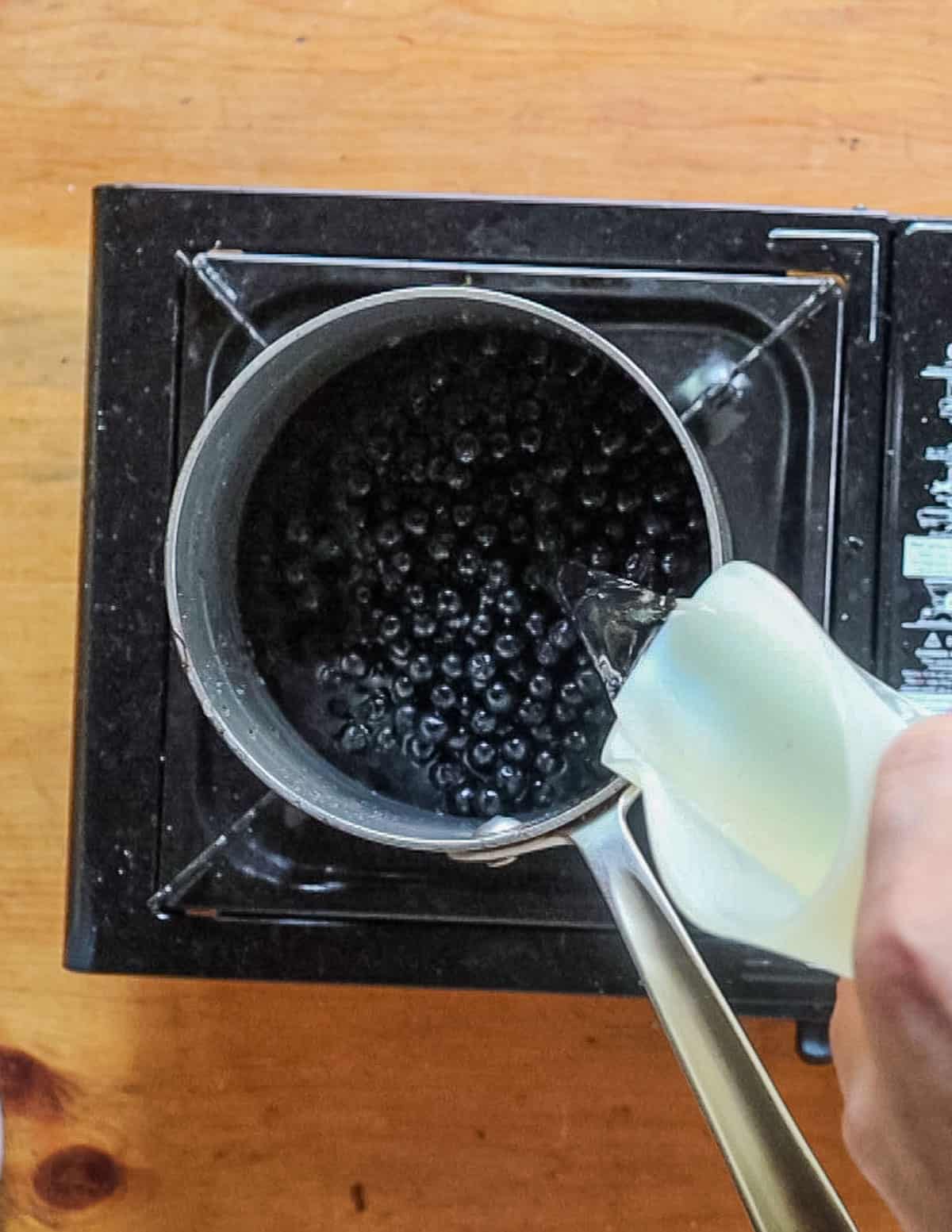
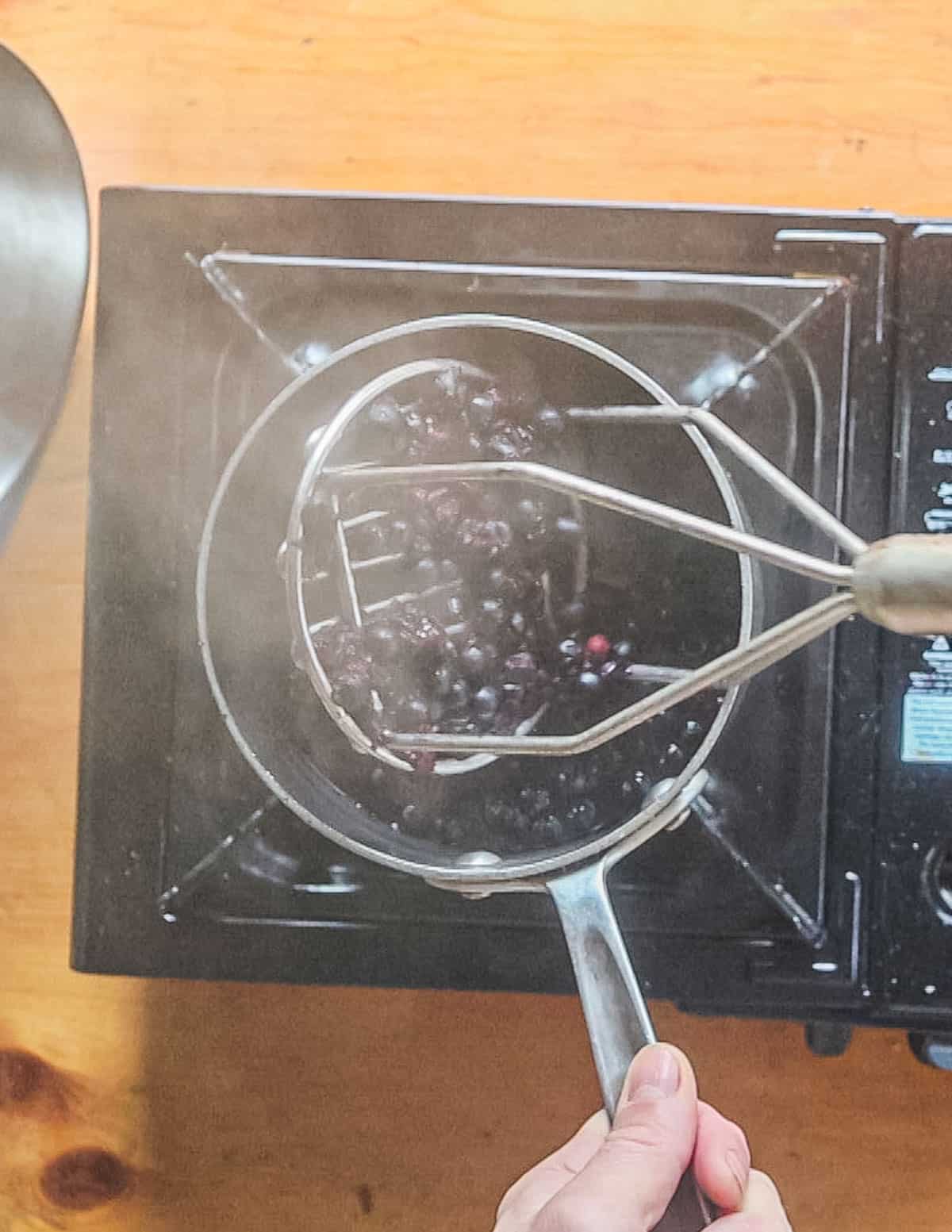
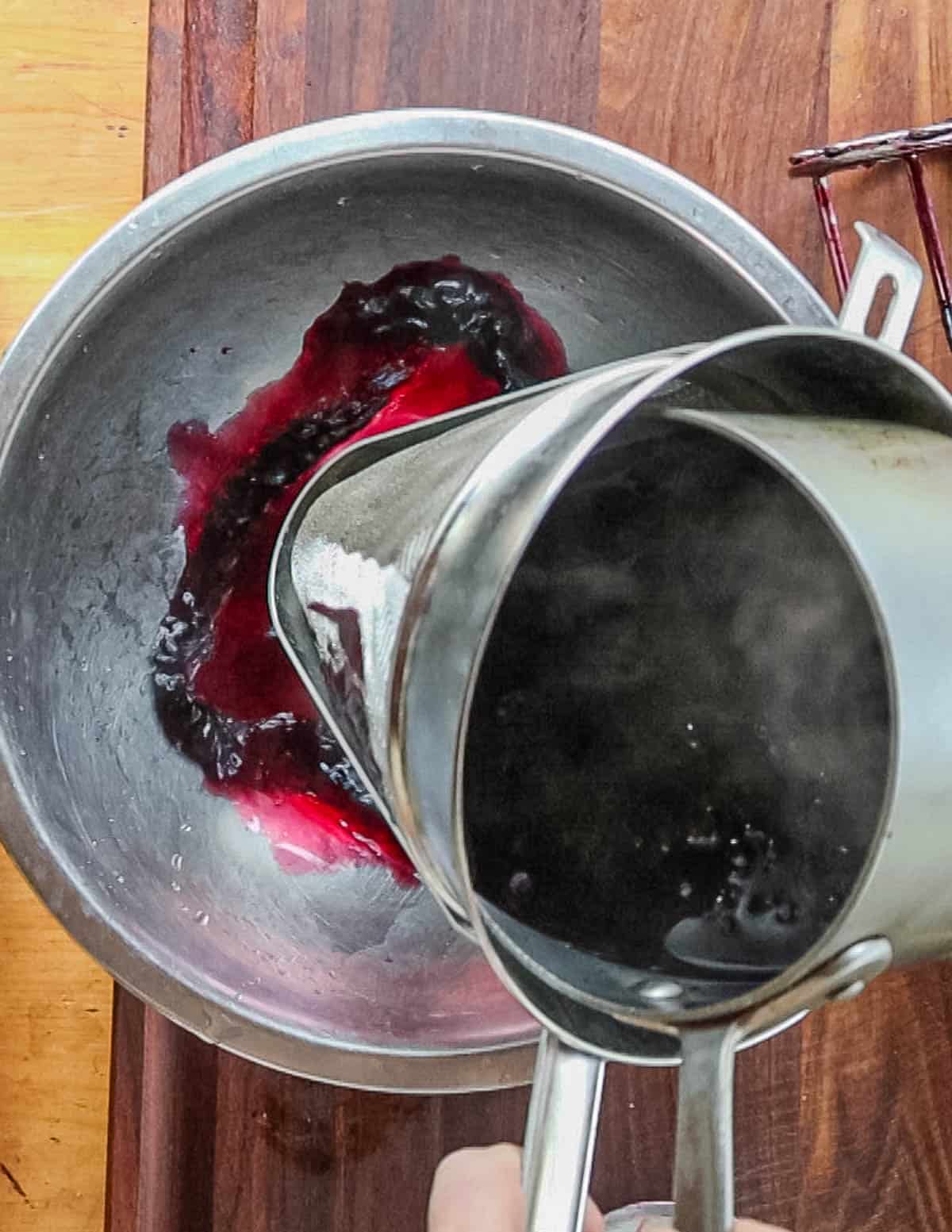
Next the sugar is mixed with unsweetened pectin. You'll zest an orange and a lemon too.
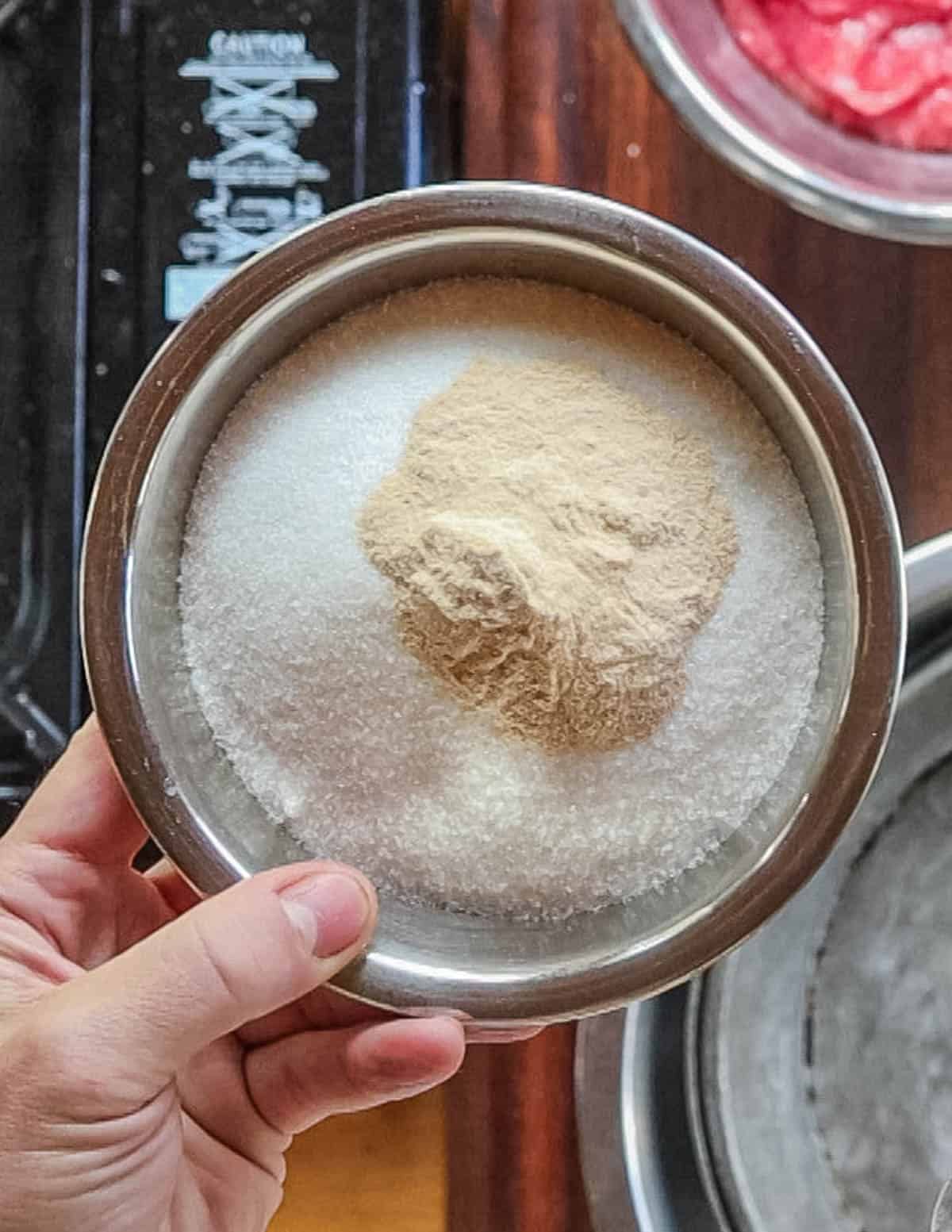
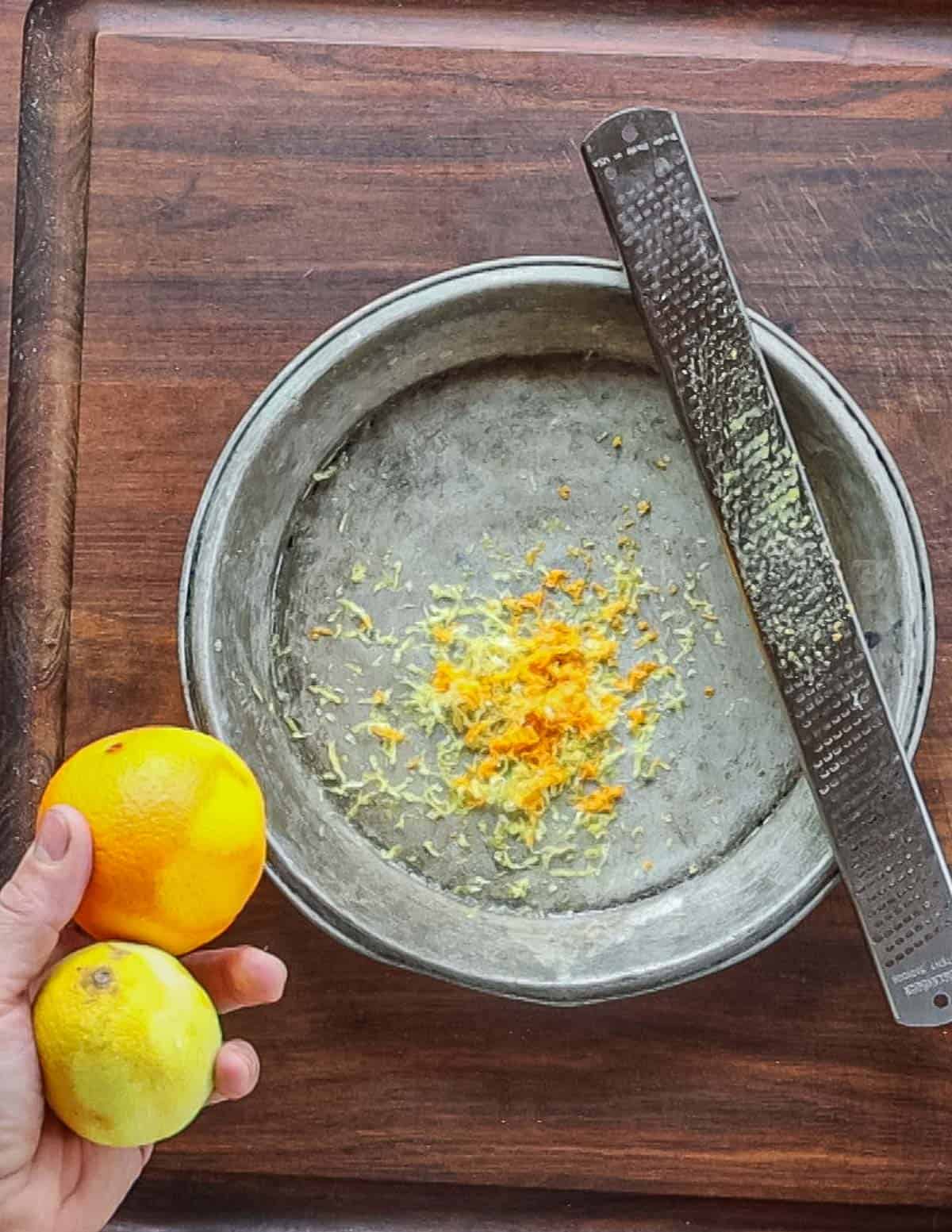
The aronia juice, sugar-pectin mixture and apple sauce and are mixed, along with some citrus zest and a pinch of cinnamon.
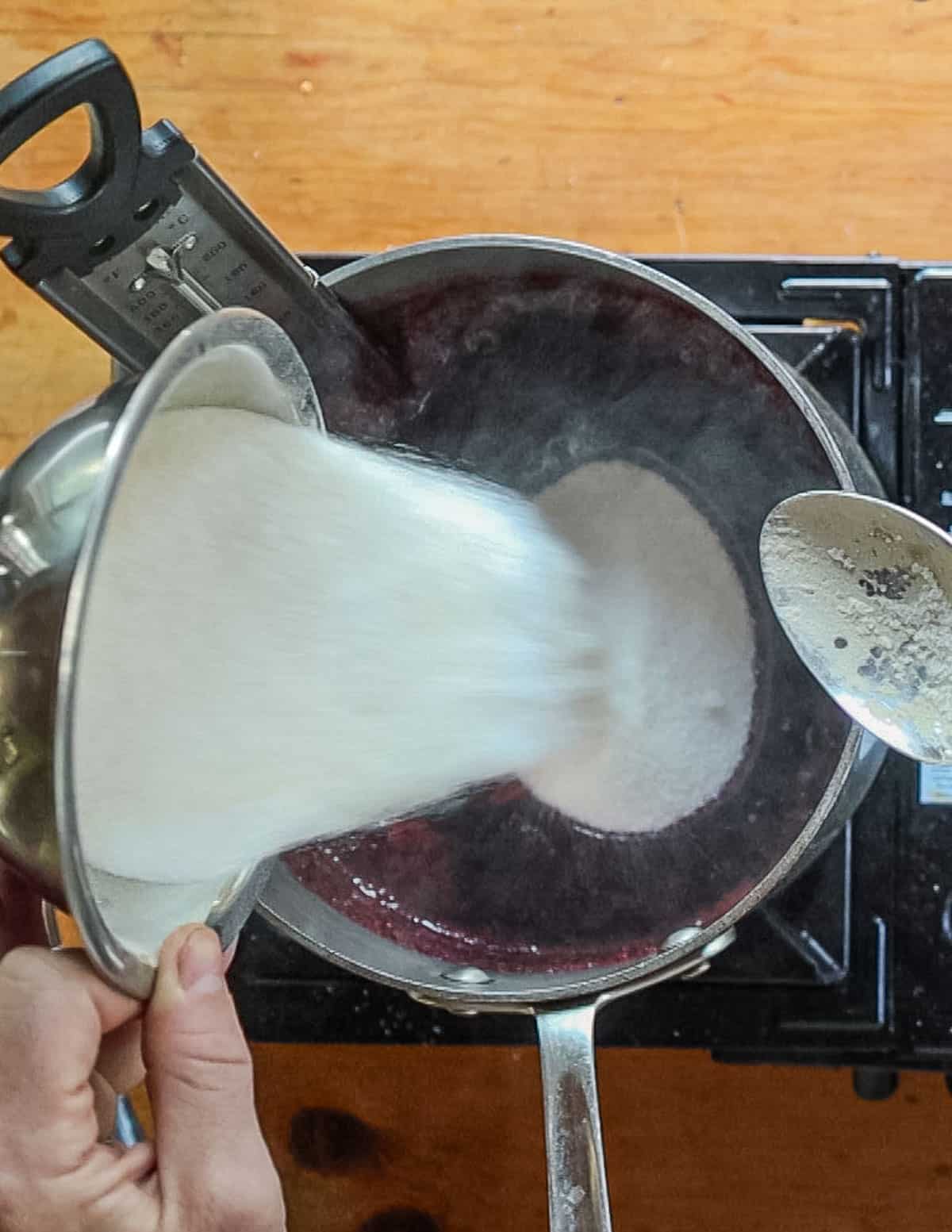
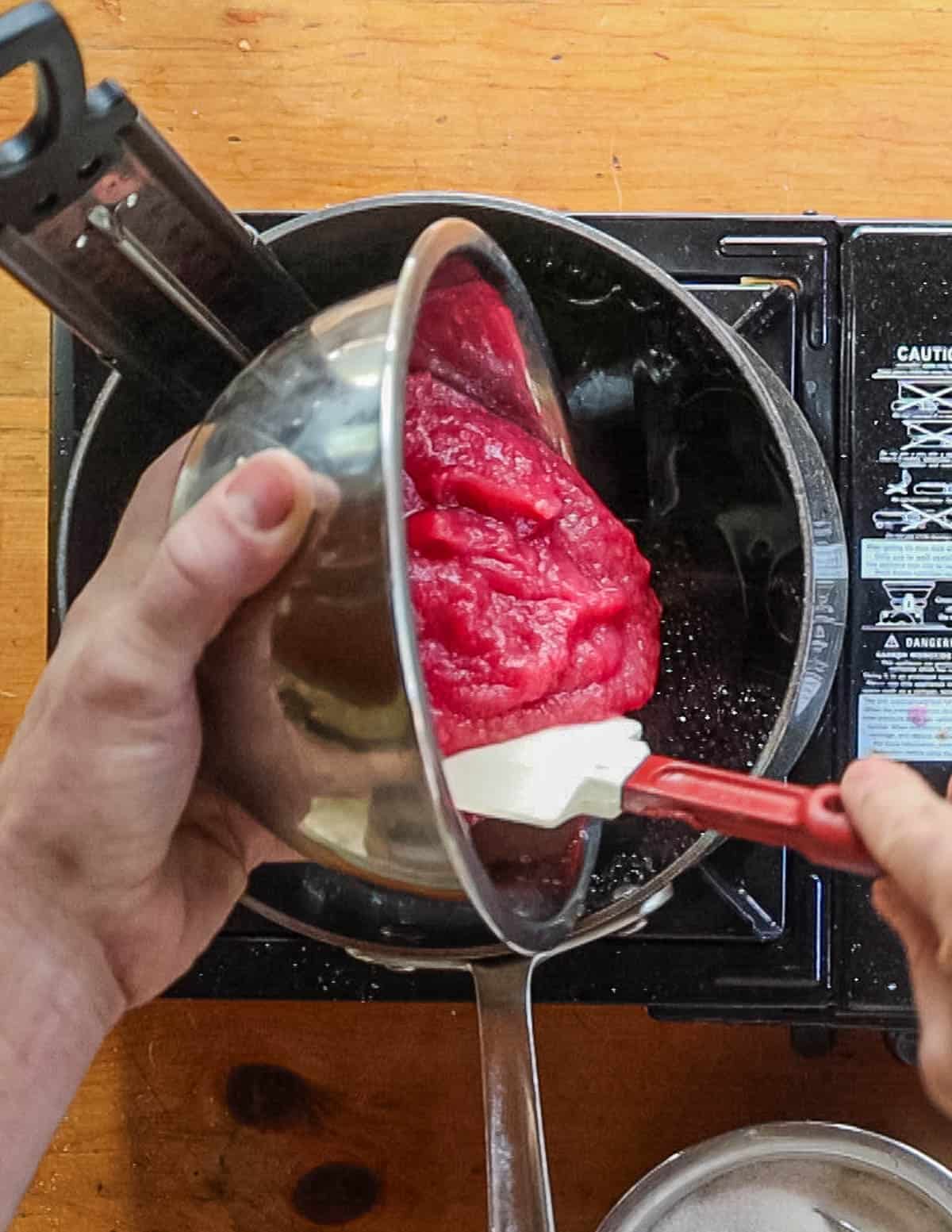
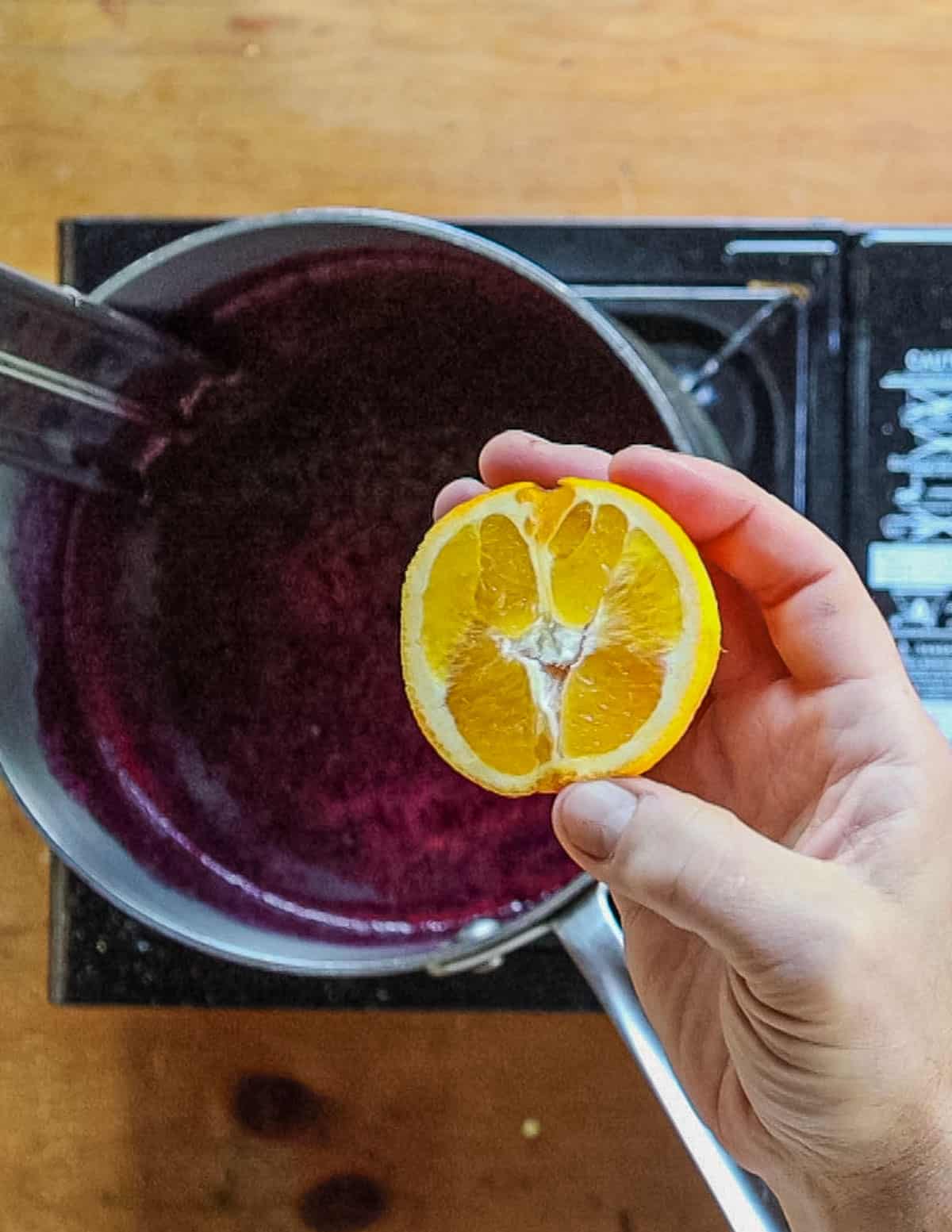
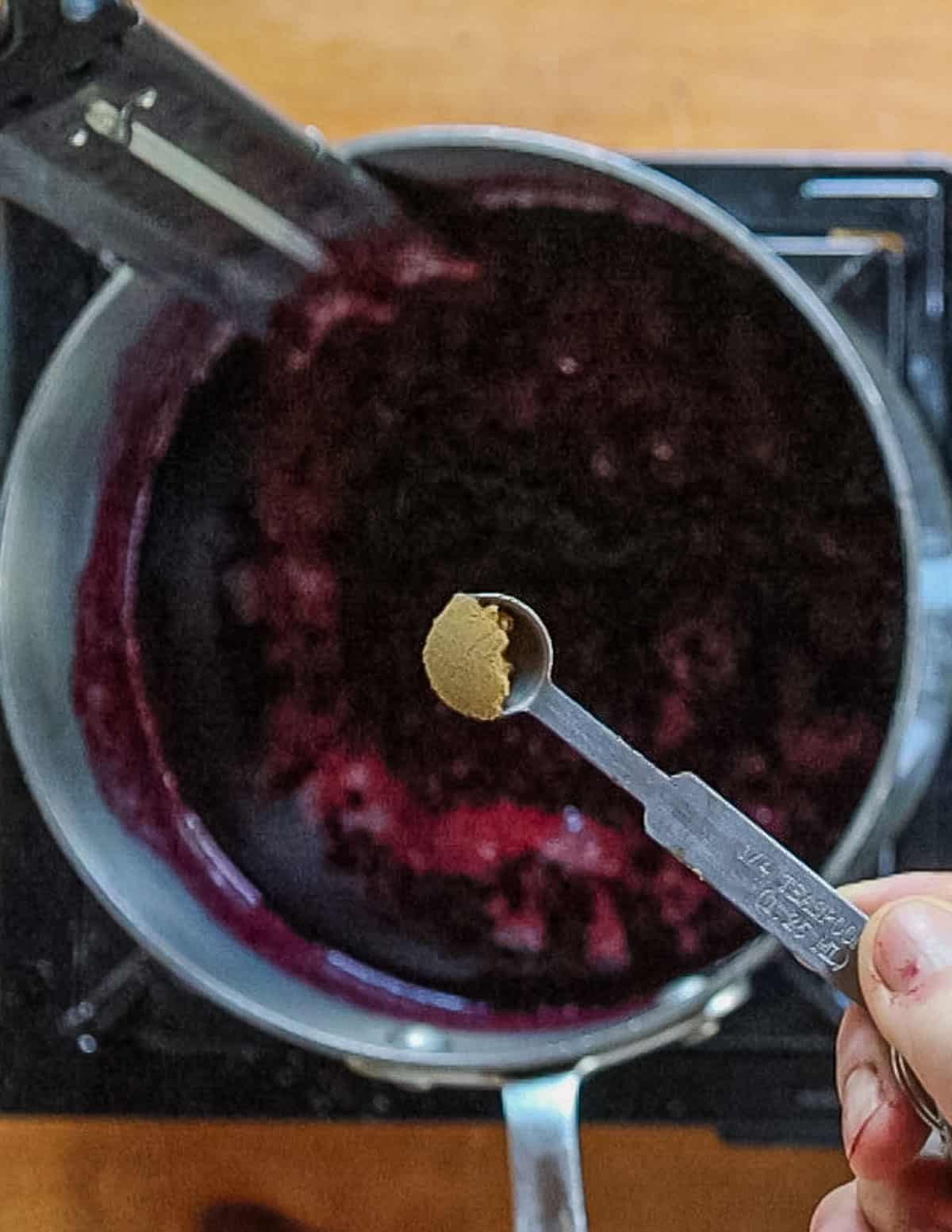
The juice is brought to a boil. When the mixture holds its shape when it's dropped on a chilled plate and the temperature is right around 220 F (about 10 minutes of boiling) it's done. Beat in the lemon juice, pour the preserve into canning jars and process in a water bath.
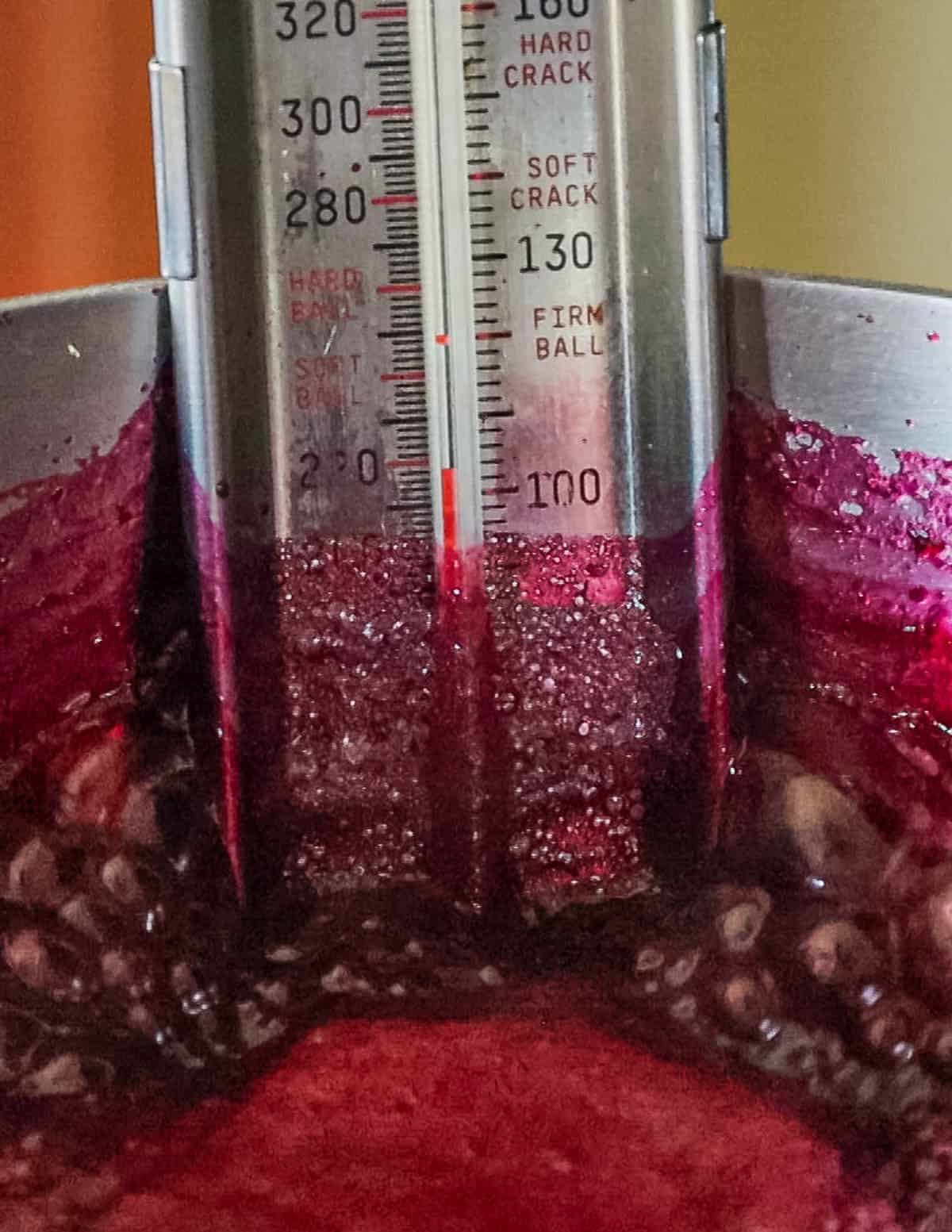
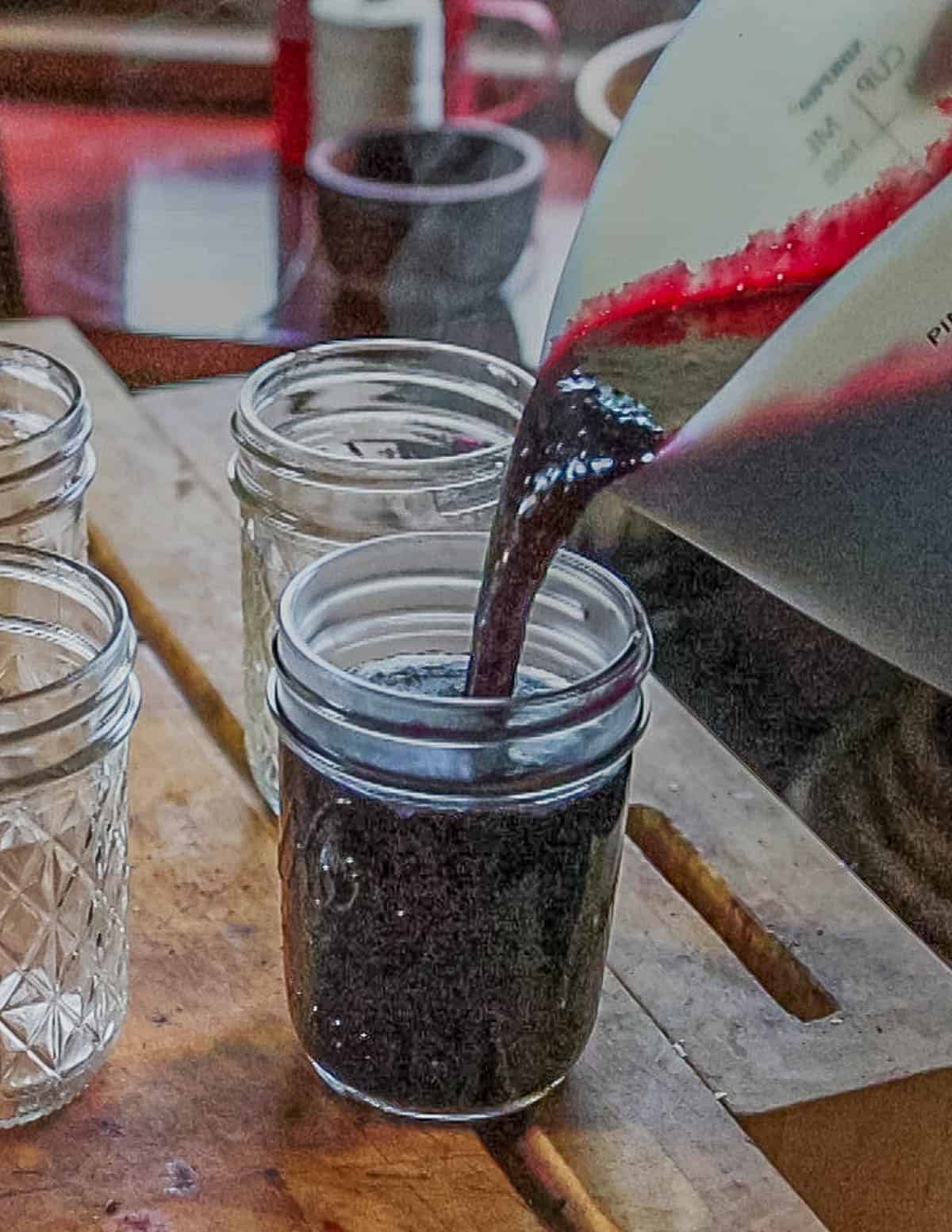
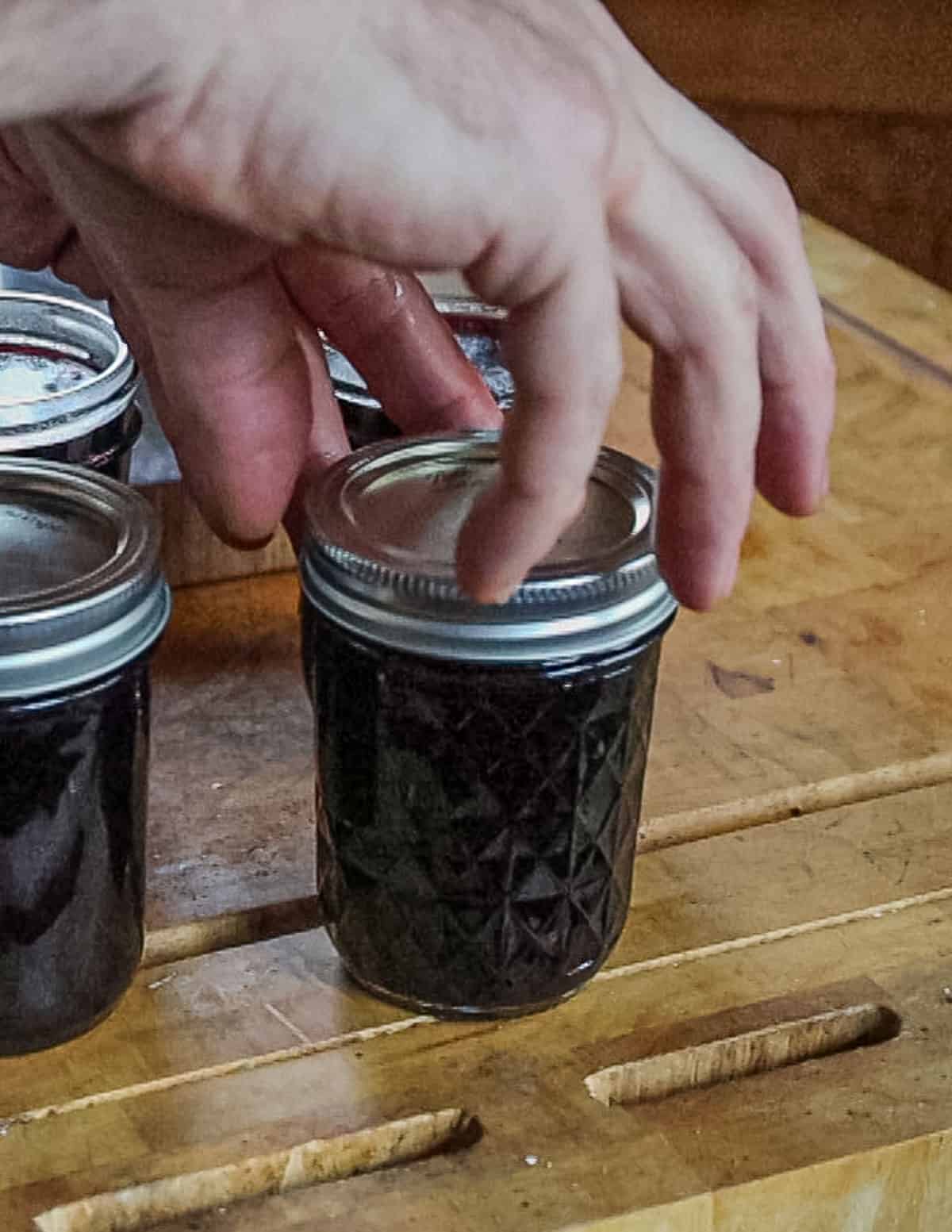
How to Use it
It's great on toast but can also be used to add color and flavor to desserts like a mousse or fruit filling.
One of my favorites you could try is something like an aronia fool , which you could make by whisking the preserves into warm cream with some breadcrumbs or sponge cake, mashing it up, then whipping, and chilling--It's a bit like a chilled fruity mousse.
I've put some spices in this (orange, lemon and a pinch of cinnamon) as the flavor of aronia is mild and slightly astringent-it benefits from some background flavors. But, if blank slate is the way you roll, it's fine with just vinegar, sugar, berries, pectin and water.
I often cook with preserves like this, especially if there's game in the freezer that might benefit from a glaze, mixing the preserves with warm stock, butter, a splash of red wine vinegar, and a good pinch of cayenne. Duck, goose, and grouse are the best partners I've used it with.
Simple Chokeberry or Aronia Berry Preserves
Equipment
- 1 1 gallon pot
- 1 grater or zester
- 1 hand blender optional
- 4 half pint canning jars
Ingredients
- 1 lb (~ 3 cups) aronia berries / chokeberries either fresh or frozen
- 16 oz water
- 2 oz red wine vinegar or homemade vinegar
- Zest of half a lemon and orange
- 2 teaspoons lemon juice or ¼ teaspoon citric acid
- 16 oz (2 cups) apple sauce preferably homemade
- 4 teaspoons unsweetened apple pectin such as Cuisine Tech brand
- 24 oz (3 cups) sugar
- Tiny pinch kosher salt
- 1 tiny pinch Cinnamon ⅛th teaspoon
Instructions
- Cover the aronia berries with water to clean them, then drain. Combine the aronia berries with the water and vinegar and bring to a boil, then turn the heat off. Mash the berries and allow the mixture to cool to room temperature.
- Meanwhile, mix the sugar, salt and pectin.
- Strain the juice from the aronia berries. Discard the berries or save them to make fruit scrap vinegar.
- Mix the apple sauce and aronia juice, then whisk in the pectin, cinnamon, lemon and orange zest. For a silky smooth preserve, you can puree it now with a hand blender.
- Bring the mixture to a rolling boil and cook until the temperature hovers around 220 F. It should take around 10-15 minutes at a rolling boil, on high heat.
- Do set tests occasionally by dropping ½ teaspoons of the aronia-apple liquid onto a chilled plate over a bowl of ice.
- When the mixture doesn’t run like water and threatens to hold it’s shape it’s done. Whisk in the lemon juice and divide the mixture between four 8 oz canning jars.
- Process the preserves in a water bath for 10 minutes, then store in a pantry.

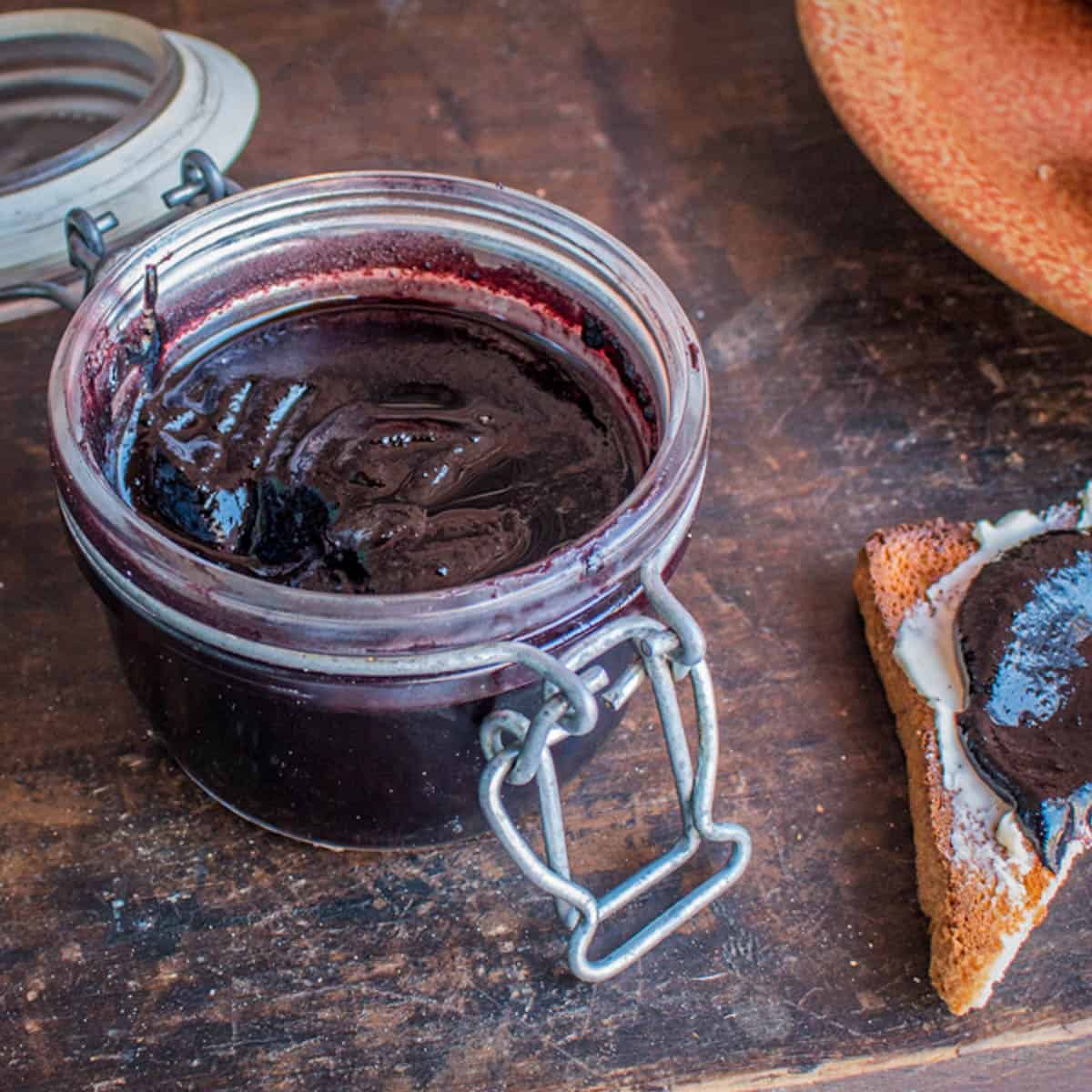
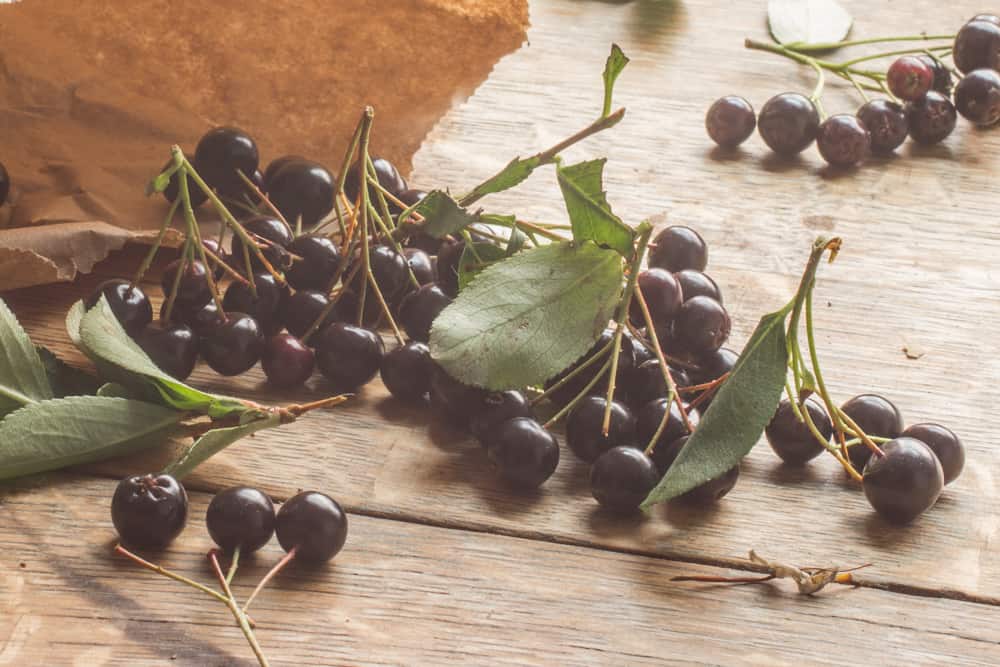

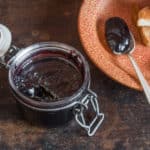
RAJA
I just made this chokeberry jam recipe, and it turned out fantastic! The flavor is so unique and delicious. I loved how you included the tips for adjusting sweetness—definitely a game-changer. Can't wait to share it with my family! Thank you for such a great post!
Sandi
Could this be frozen instead of canned?
Alan Bergo
That should work but I'd probably double the amount of apple butter or apple sauce as packaged gelatin can weaken a bit when it's frozen.
Anthony Thomas Bear
Can I substitute some local honey for granulated sugar in this recipe? My dad has a couple of hives, and I'd like to use some of his honey in my preserves.
I'm new, so the more info the better I'll do.
Thanks in advance!
A. Bear
Alan Bergo
I haven’t done it but it should work fine.